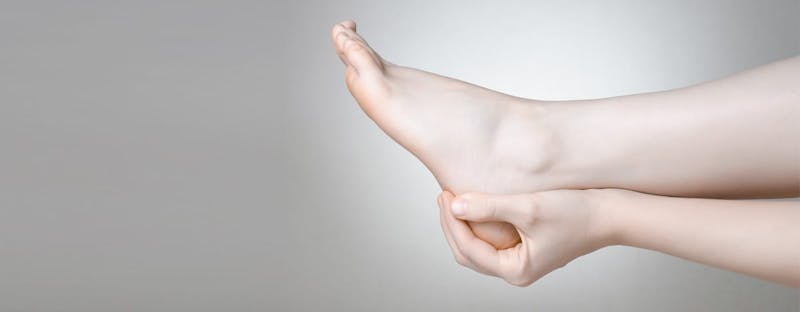Schedule a Consultation
Contact Us


Haglund’s deformity is characterized by a prominent bump situated at the back of the calcaneus, commonly referred to as the heel bone. The Achilles tendon attaches calf muscles at the back of your leg to the heel bone. A small sac of tissue, called a bursa, allows the tendon to glide against the bone as you walk. If the bump at the back of the calcaneus is too prominent, the bursa, tendon, and soft tissue can thicken and become inflamed.
Haglund’s Deformity Symptoms
The most common symptom of Haglund’s deformity is heel pain; however, not all patients with the deformity experience pain. Pressure and friction from footwear can cause the tissue over the bump to thicken and form a callus. In some instances, the bursa at the back of the heel also becomes inflamed, causing bursitis.
Causes of Haglund’s Deformity
The shape of the calcaneus can vary from person to person. An individual is more likely to develop Haglund’s deformity if the area where the Achilles tendon attaches is especially prominent, which squeezes the tissue at the back of the heel between the bone and the shoe. The deformity does not normally affect function except when the area becomes inflamed and painful.
Diagnosis and Treatment Options
An X-ray is normally required to diagnose a Haglund’s deformity and rule out other possible causes of the heel pain. The X-ray will reveal a bump at the back of the calcaneus at the insertion point of the Achilles tendon. Treatment typically begins with non-surgical measures, including changing footwear, using pads or cushions to relieve pressure on the back of the heel, and physical therapy.
Surgery may be required if the conservative measures do not alleviate the discomfort. The goal of the surgery is to reshape the heel bone so that it is not as prominent. One technique involves retracting the Achilles tendon to reveal the back of the calcaneus, which is then reshaped and rounded to relieve the pressure. Another technique involves removing a wedge-shaped section from the heel bone to shorten it. Once the pressure is reduced, the tissue will gradually return to normal or near-normal size.
Most patients are allowed to go home the same day as the procedure. A splint or boot is normally required for a couple of weeks following surgery, and most patients resume full activity within about six weeks.